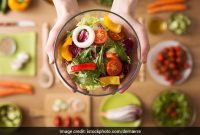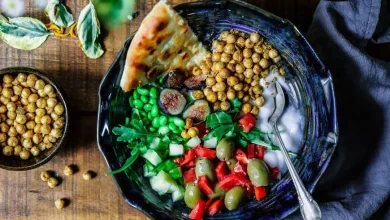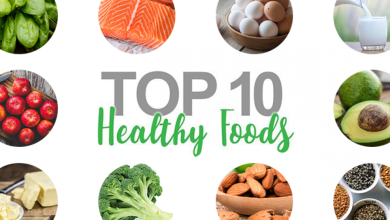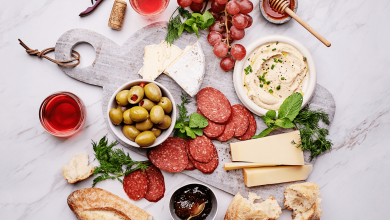8 Healthiest Vegetables
Vegetables enrich the body with useful substances, give energy and a feeling of lightness. In this article, we have collected 8 of the most healthy vegetables for every day and tips on how to cook them.
1. Broccoli
The green relative of cauliflower surpasses it in terms of nutritional value and amount of nutrients. 100 g of broccoli contains almost the entire daily requirement of vitamins C and K. The first is responsible for immunity, and the second is necessary for blood clotting and bone strengthening. Green cabbage has a lot of fiber, so it saturates the body and improves the functioning of the gastrointestinal tract.
Other beneficial substances in it are antioxidants, which inhibit the negative effects of free radicals, protecting cells from damage. One of them is lutein. This plant pigment is important for eye and capillary health. Broccoli is also worth eating to improve cognitive functions, strengthen the cardiovascular and nervous systems.
It cooks very quickly – in just 5 minutes a juicy side dish or salad ingredient will be ready. It will also make a tender soup and a delicious casserole that can be supplemented with cheese.
2. Spinach
It belongs to leafy vegetables – an indispensable source of vitamins, fiber and minerals. 100 g contains 750 mg of vitamin A at a daily rate of 900 mg.
Due to the high content of iron, spinach normalizes the level of hemoglobin in the blood, which contributes to the saturation of cells with oxygen. The vegetable helps to remove toxins, toxins and normalizes cholesterol.

Another nice bonus is an improvement in well-being and a decrease in nervous excitability due to folic acid and magnesium in the composition.
Spinach is a great addition to a salad with chicken or vegetables. It can also be used as the main ingredient in smoothies, on toast, or added to scrambled eggs.
3. Bulgarian pepper
According to the content of vitamin C, sweet pepper overtakes even an orange: 250 mg at a daily rate of 90 mg.
Bell peppers are rich in quercetins, food antioxidants that protect cells, reduce blood clotting, and increase capillary permeability. It is a low calorie product that is 70% water, so it is great for weight loss and detox.
Bell peppers have a bright sweet taste, so eat them fresh or add them to salads. Well, if you don’t like it fresh, try the classic stuffed peppers.
4. Carrot
The main vitamin in carrots is vitamin A, which is responsible for healthy skin, hair, and good eyesight. Carrots are rich in carotenoids, plant pigments that give the vegetable its orange color. For a person, they play a significant role: they fight free radicals, protect against inflammatory processes and strengthen the immune system.
In addition to these substances, carrots contain vitamins of groups B, C, K and minerals: potassium, manganese, phosphorus, copper, zinc. This bright vegetable improves blood circulation, slows down the aging process, strengthens the cardiovascular system and helps the proper absorption of carbohydrates in the intestines.
Many delicious dishes are made from carrots: cake, meatballs, soup and pancakes.
5. Brussels sprouts
Brussels sprouts are not the most popular product due to their specific taste, and are most often sold frozen. But it is a very useful vegetable. It, like other cabbages, contains vitamin C: 100 g – 85 mg at a daily rate of 90 mg. In addition, it contains vitamin B2, B6, B9, vitamin K and minerals: potassium, manganese, silicon, magnesium, phosphorus.
It helps to cleanse the body of toxins and toxins, has a positive effect on the cardiovascular system and heals the gastric mucosa. Due to the high content of silicon, cabbage strengthens bones and joints, and also improves the functioning of the nervous system.
This product does not cause gas formation and there is more vegetable protein in it than in white cabbage.
 So that Brussels sprouts do not get bitter and reveal their taste, boil them for 3-5 minutes with the addition of lemon juice and salt. Then sauté in the sauce and serve as a side dish.
So that Brussels sprouts do not get bitter and reveal their taste, boil them for 3-5 minutes with the addition of lemon juice and salt. Then sauté in the sauce and serve as a side dish.
6. Tomatoes
The most popular vegetable in Russia and a number of other countries, a storehouse of vitamins and minerals. One medium tomato contains nearly half of your daily vitamin C intake, as well as vitamins B, D, A, magnesium.
potassium, phosphorus, and folic acid. Another useful substance is lycopene, which fights free radicals and lowers cholesterol. If you eat tomatoes regularly, you can lower blood pressure, improve skin, eyesight and normalize digestion.
If you are tired of tomatoes in a salad, try a more original dish: gazpacho, baked tomatoes or tomato juice.
7. Pumpkin
A bright autumn vegetable and another source of vitamin A. But, of course, the usefulness of pumpkin is not limited to this. It contains vitamin E and group B, which affect the condition of the skin, hair and nails, and also strengthen the cells of the body. Pumpkin pulp contains potassium, which protects the cardiovascular system.
and seeds – zinc and polyunsaturated fatty acids. These substances strengthen blood vessels and have antibacterial properties. Pumpkin is one of the top foods for calming the nervous system thanks to its magnesium and vitamin B6. Therefore, it should be eaten with excitability and insomnia.
Puree soup, pancakes, pie, porridge, casserole – all this can be made from pumpkin. Pumpkin is sweet, so no additional sugar or sweetener is needed. Dishes are bright, tasty and healthy.



